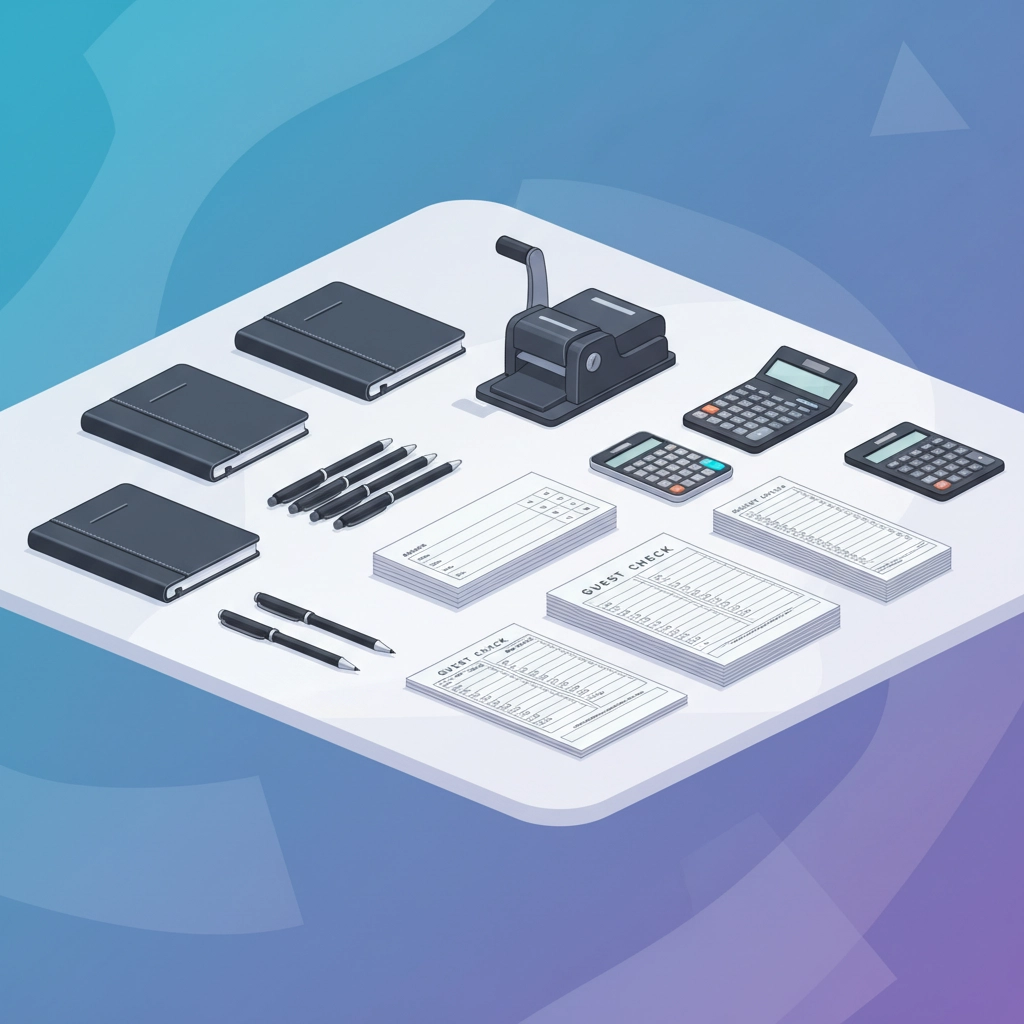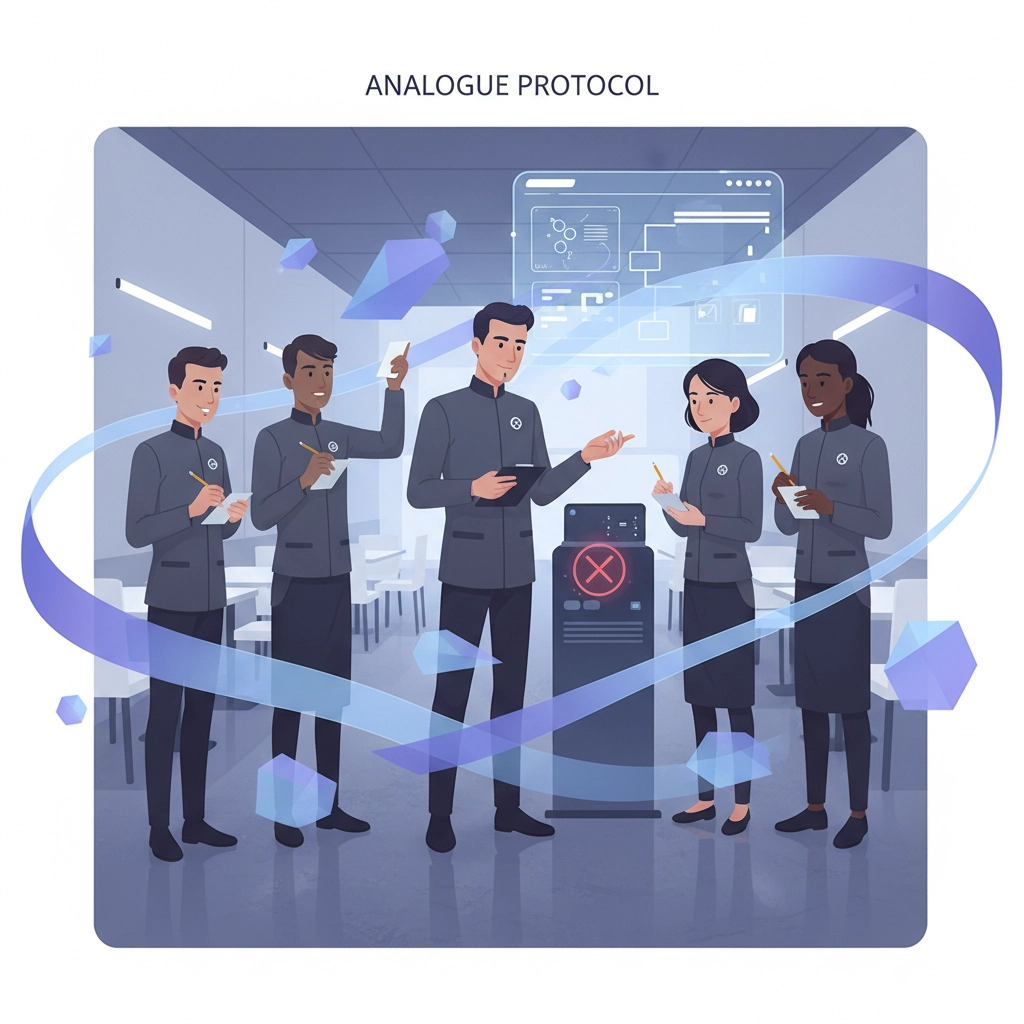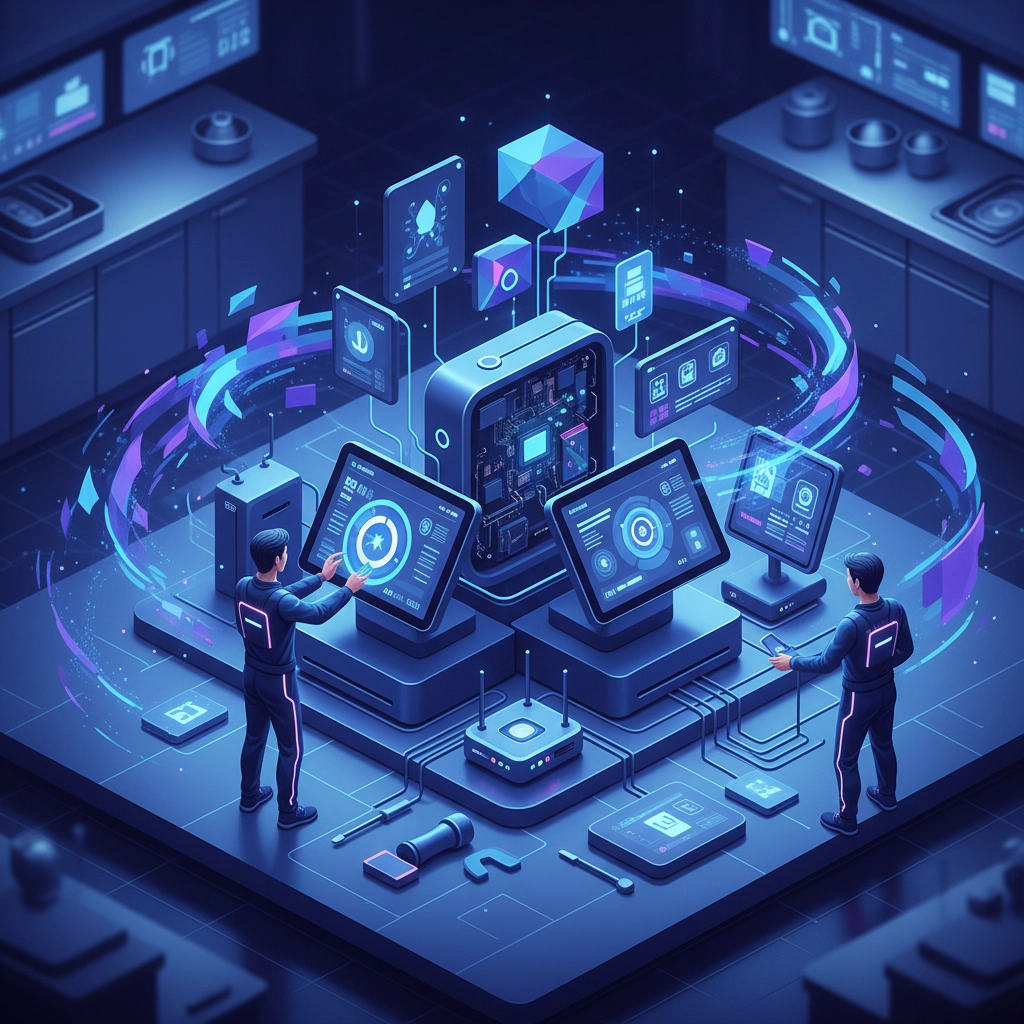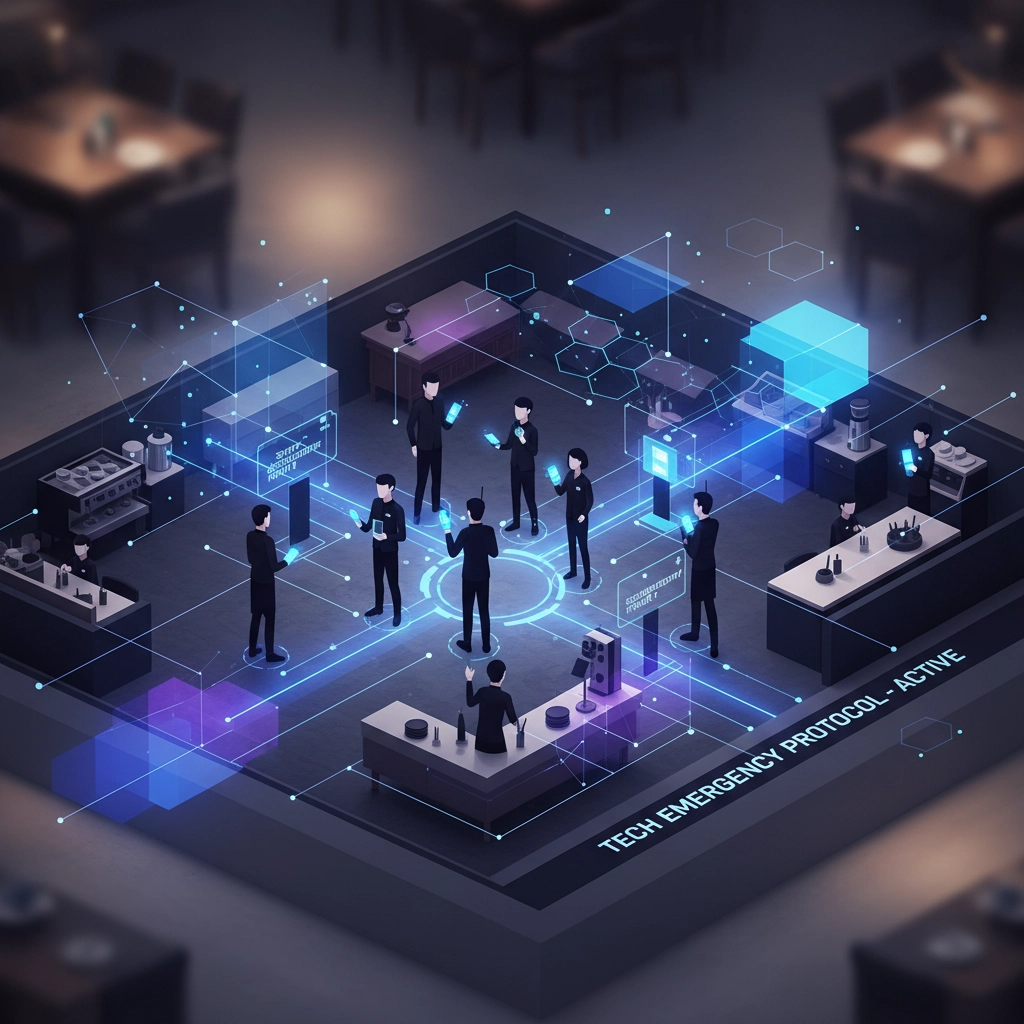Picture this: it's Friday night, your restaurant is packed, and suddenly your POS system crashes. Orders are backing up, servers are panicking, and customers are getting restless. Sound familiar? If you've been in the restaurant business for more than five minutes, you've probably lived through this nightmare scenario.
Here's the thing, technology failures aren't a matter of "if" but "when." The restaurants that survive and thrive are the ones that have simple backup plans in place before disaster strikes. Today, I'm sharing some no-nonsense IT tricks that'll keep your restaurant running smoothly even when your tech decides to take an unscheduled vacation.
Build Your Restaurant's Crash Kit
Think of your crash kit as your restaurant's emergency toolbox. Every host station, server station, and key location should have one ready to go. Here's what needs to be in there:
For Front of House:
- Legal pads for taking reservations and notes
- Plenty of working pens (not just one, trust me on this)
- Old-school credit card imprint machines
- Basic calculators
- Carbon copy order pads
- Sticky notes and a stopwatch
For Kitchen:
- Printed order sheets with standard abbreviations
- Kitchen timers as POS backup
- Manual ticket system
The carbon copy system is pure gold when your POS goes down. One copy goes to the kitchen, one stays with the server for the guest. Simple, effective, and time-tested.

Create a Code Word System
This is probably the smartest trick most restaurants never think of. Pick a simple code word that means "tech is down, switch to backup mode." Maybe it's "thunderstorm" or "coffee break", whatever works for your team.
Why does this matter? Two reasons:
- No explanations needed – When someone says the code word, everyone instantly knows what's happening
- Guest privacy – Customers don't need to hear "our system crashed" announced across the dining room
When your team hears the code word, they know to grab their crash kits and switch to manual operations. For hosts, it might mean spacing out seating by 10 minutes to give the kitchen breathing room. For servers, it means pulling out those carbon copy pads.
Print Critical Information Daily
Here's a habit that takes two minutes but can save your entire shift: print your reservation list before every service. Not just when you expect problems, every single day.
Print two copies:
- One for the host stand
- One for the kitchen (so they know when to expect rushes)
While you're at it, print out your staff schedule, VIP guest notes, and any special menu items or modifications for the day. When your reservation system goes dark, you'll still know that Table 12 has a shellfish allergy and Table 8 is celebrating their anniversary.
Run Tech Failure Drills
You do fire drills, right? Well, you need tech failure drills too. Once a month, unplug your POS system during a slow period and run a practice service using only your backup systems.
Time your team on:
- How quickly they can switch to manual order-taking
- Whether they can maintain accurate seat numbers and special requests
- How smoothly they handle payment processing
- Whether the kitchen can keep up with handwritten orders
The first time you do this, it'll probably be chaos. That's exactly why you need to practice. By the third or fourth drill, your team will switch to manual mode like it's second nature.

Master Preventative Maintenance
Here's the truth nobody talks about: most "unexpected" equipment failures are actually pretty predictable. They happen when restaurants skip regular maintenance because everything seems to be working fine.
Key maintenance areas:
- POS terminals – Clean screens, check connections, update software during off-hours
- Internet equipment – Dust out routers, check cable connections, test backup internet
- Kitchen display systems – Clean screens, verify network connections
- Payment processors – Test card readers, clean magnetic stripe readers
Set calendar reminders for monthly checks. It's way cheaper to maintain equipment than to replace it during your busiest service.
Set Up Multiple Internet Connections
Your restaurant should never rely on a single internet connection. Period. Set up a secondary connection through a different provider: even if it's just a mobile hotspot plan.
When your main connection goes down, you can quickly switch your critical systems to the backup. Many modern routers can automatically failover to a secondary connection, keeping your POS and reservation systems online even when your primary internet crashes.
Create Physical Menu Backups
If you're running digital menu boards or QR code menus, always have physical backups ready. Print a small stack of laminated menus every time you make changes. Store them behind the host stand where staff can quickly grab them.
Same goes for wine lists, daily specials, and dessert menus. When your digital displays go dark, servers can still confidently describe what you're serving.

Establish Clear Communication Channels
When tech fails, communication becomes even more critical. Designate one person (usually a manager) as the "communication hub" who coordinates between front of house, kitchen, and any IT support you're calling for help.
Use a simple system:
- Walkie-talkies for kitchen-to-floor communication
- One designated phone for calling vendors or IT support
- A central location (like the host stand) where all updates get reported
Prepare Payment Processing Alternatives
Payment processing failures are particularly stressful because they directly impact your revenue. Have multiple options ready:
- Keep manual credit card imprint machines at each station
- Maintain relationships with multiple payment processors
- Train staff on how to process payments manually
- Keep cash handling procedures fresh in everyone's mind
Remember, you can always process cards manually and run them through the system later once it's back online.
Document Everything During Outages
When you're in crisis mode, documentation feels like the last thing you want to do. But keeping track of what happened during a tech failure helps you improve your response for next time.
Assign someone to quickly note:
- What time the failure started
- Which systems were affected
- How long it took to implement backup procedures
- Any revenue impact or guest complaints
- What worked well and what didn't
This information is golden for improving your disaster response and can also be helpful when working with IT support to prevent future issues.

Know When to Call for Professional Help
Sometimes the simple fixes aren't enough, and you need professional IT support. The key is knowing when to make that call quickly rather than spending precious time trying to fix complex issues yourself.
Call for help immediately when:
- Multiple systems are down simultaneously
- You suspect a cybersecurity issue
- Hardware is physically damaged
- Network infrastructure problems affect multiple devices
Having a reliable IT support partner means you're not frantically googling solutions during your dinner rush. At Whitewick IT, we understand that restaurant downtime means lost revenue and frustrated customers: which is why our support is designed for fast response times when you need it most.
The Bottom Line
Technology will fail: that's not pessimism, that's reality. The restaurants that handle these failures gracefully are the ones that prepare for them in advance. Your crash kit, backup procedures, and staff training are investments in your restaurant's reputation and revenue.
Start implementing these tricks during your next slow period. Test them, refine them, and make sure every team member knows the procedures. When (not if) your next tech meltdown happens, you'll keep serving great food and providing excellent service while your competitors are scrambling to figure out what went wrong.
Remember, your guests don't care about your technical difficulties: they just want their dining experience to be smooth and enjoyable. With the right preparation, you can deliver that even when your technology decides to take a break.